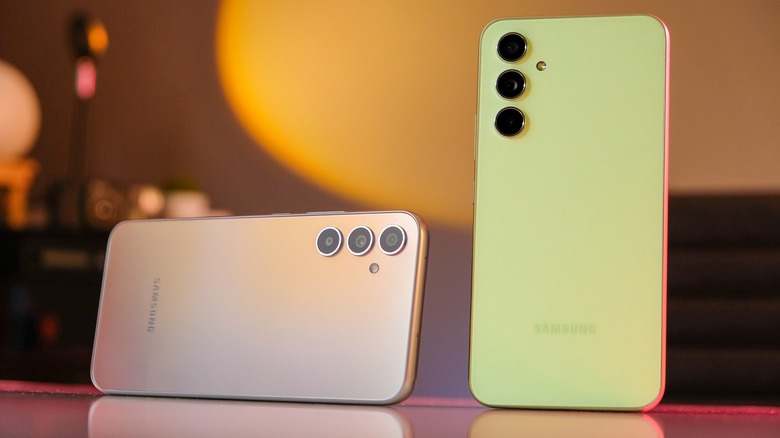Leading smartphone manufacturers like Samsung Electronics and Oppo intend to increase production in 2024, suggesting that the sector is ultimately emerging from its protracted downturn.
The planned increases, according to people briefed on the subject, range from roughly 6% to 9%, with larger increases anticipated in more premium segments. This would be a significant advancement over 2023: According to data from Counterpoint Research, smartphone shipments are predicted to fall to their lowest level in a decade this year, having already declined in 2022.
According to sources, Samsung has informed suppliers that it plans to produce over 240 million smartphones in 2019. They also mentioned that this is roughly 9% more than the order estimate the company provided earlier in 2023.
According to Samsung projections seen by Nikkei Asia, the largest smartphone manufacturer in the world by shipments anticipates producing roughly 8% more of its flagship foldable smartphones, the Galaxy Z series, in 2024 than it does in 2023. Meanwhile, it anticipates growth of more than 10% for its more reasonably priced Galaxy A and M lines.
With an expected improvement in consumer sentiment, Samsung stated that it plans to increase shipments of its Galaxy S Ultra model by double digit percentage next year. The company did not provide a specific target for smartphone sales, only stating that it aimed to outpace market growth overall.
According to sources who spoke to Nikkei Asia, a number of Chinese smartphone manufacturers have also given their suppliers reasonably optimistic projections.
An executive at a company that supplies Samsung and nearly all other Android phone makers stated, “We’ve seen all Android phone makers become more confident about 2024 after such a long correction period, which has lasted for more than a year.” “It’s particularly important that Samsung is adding orders for 2024 because it is still the leader of the handset market and its outlook means a lot for the industrywide recovery.”
The second-largest producer of Android phones worldwide, Oppo of China, expects to produce up to 150 million smartphones in 2024—a rise of more than 6% from roughly 141 million in 2023. According to people with knowledge of the situation, Honor has requested additional support from suppliers for 2024 as it continues its push for international expansion.
According to a previous report by Nikkei Asia, Huawei Technologies, which has only recently resumed shipping 5G smartphones, intends to build up to 70 million devices by 2024, even if obtaining some chipsets—including 4G ones—from outside suppliers in order to meet that goal.
An executive at a component supplier who increased capacity for Huawei prior to the smartphone maker being placed on Washington’s blacklist said, “Huawei’s comeback is a shot in the arm for us.” “It’s been giving us healthy orders since this summer and is expected throughout next year.”
A different component supplier’s executive had a more circumspect outlook. “We are not too confident yet to call it a complete recovery from the yearslong slump, but we are definitely seeing restocking demand from other phone makers at least until the Chinese Lunar New Year holidays.”
According to him, his company—which supplies Samsung, Huawei, Oppo, Xiaomi, and Vivo—began to notice an increase in demand from other Android smartphone manufacturers following Huawei’s Mate 60 Pro launch.
Analysts’ projections are currently rather conservative.
According to Liz Lee, a smartphone analyst with Counterpoint, overall smartphone shipments will probably increase by 3% over this year, with part of the recovery “driven by emerging markets, increasing consumer confidence and improving macroeconomic conditions.” However, Lee noted that there are still unknowns and that smartphone manufacturers will have to overcome certain obstacles unique to the market.
According to Lee Seung-woo, a senior analyst at Seoul’s Eugene Investment & Securities, Samsung’s market share will remain constant while the global smartphone market expands marginally in 2019.
“We observe a notable decline in inventory in Chinese and emerging market retail channels. We predict a slight increase in the global smartphone market,” Lee stated. “Samsung’s sales will match with the market level, maintaining its market share.”
The excitement surrounding ChatGPT’s generative AI technology is boosting expectations for a smartphone comeback, but analysts do not anticipate a quick effect.
“I don’t think generative AI will make big changes next year, though it is definitely good news in the long term,” Lee stated.
According to Counterpoint, the percentage of shipments of smartphones with generative AI capabilities will be approximately 4% in 2023 and will increase to approximately 8% the following year. By 2027, it indicates that the penetration rate might increase to 40%.
Oppo chose not to respond. According to Honor, its sales in international markets have increased by almost 200% for 2023. The company also feels that its competitiveness and market position have significantly improved.



